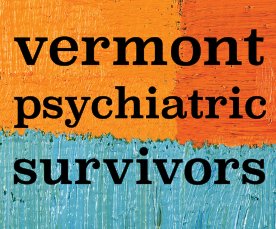According to the national advocacy group Lives in the Balance, Vermont’s public schools use restraint and/or seclusion upon 587 children each year. Kids with disabilities comprise the vast majority of cases.
Recently, Lives in the Balance released a free documentary, Restraint and Seclusion in Vermont Schools: Ending the Trauma, on YouTube. The Montpelier-based nonprofit All Brains Belong VT has worked to promote the 28-minute film.
Dr. Mel Houser, the latter organization’s executive director, appears in the opening scene, discussing a five-year-old Vermonter who, on their first day of school, ended up alone in a windowless, closet-sized room.
“When an adult finally opened the door, after the child had screamed themselves to exhaustion after 90 minutes, they saw that the child had removed all of their clothes, scratched up their tiny, 40-pound body, and urinated all over themselves,” she narrates. “This was their first day, their introduction to public school.”
Restraint and Seclusion in Vermont Schools gathers interviews with parents, doctors, advocates, educators, and a survivor to make the case against such practices, citing the risks they pose to children’s mental and physical health.
“Vermont has made so much effort over the past decade enhancing trauma-informed schools, trauma-informed healthcare, trauma-informed everything,” Houser continues. “But being held down, immobilized, with your bodily autonomy violated by an adult with more power than you, is itself a traumatic event.”
An accompanying fact sheet by All Brains Belong points out that Vermont law permits even “supine and prone restraints, the deadliest form of restraints.”
While Vermont has not recorded any deaths by way of such tactics in its public schools, Houser asserts that 30 other states have, with asphyxiation cited as the most common cause. Many of those states have since outlawed the usage of supine and prone restraints.
The documentary casts doubt on the notion that schools use restraint and seclusion for the exclusive purpose of keeping students and teachers safe. It presents accounts where they function instead as disciplinary measures for minor offenses like running in the halls.
“Every single time he was restrained, he was not being violent. He was not being aggressive. He was not being dangerous. He was not harming himself. He was not harming somebody else,” Robyn Freener-Maguire, a parent, says of her child.
“I might have been a little upset, but locking me in that room, that made me even more upset,” a survivor recounts.
Brian Dalla Mura, a special education teacher, acknowledges that he used to employ restraint and seclusion in his classroom, just as his colleagues habitually did.
“I didn’t know there were other methods out there,” he laments.
He recalls instances of restraint as “surprisingly violent. In the trainings, it looks calm, organized, but in reality, it’s fighting, screaming, kicking biting, punching, people out of breath, and very chaotic, loud, noisy, scary – scary for the children, scary for the teachers, scary for the witnesses. The comparison I make is it’s like somebody being arrested, and oftentimes it looks worse than what you would see the police doing on the streets.”
Dr. Ross Greene, the founder of Lives in the Balance, developed the Collaborative and Proactive Solutions (CPS) model of intervention for kids with “challenging” behaviors. Learning of such alternatives may be enough to persuade some educators to abandon seclusion and restraint.
For others, the documentary argues, legislation is probably necessary.
“We have hard data that shows it takes place in plenty of schools that have already received tons of training in multi-tiered systems of support,” says Kirsten Murphy, executive director of the Vermont Developmental Disabilities Council.
In 2022, the Harwood Unified Union School District in Washington County garnered critical media attention for its heavy reliance on restraint and seclusion, thanks to whistleblowing by Dalla Mura, a former employee. It changed its internal policies this spring. Meanwhile, in January, Rep. Theresa Wood introduced a bill to restrict the use of restraint and seclusion in schools throughout Vermont.
The bill died after five hearings by the House Committee on Education. Restraint and Seclusion in Vermont Schools seems designed to function, above all else, as an extended compilation of testimony for legislators, with background music as the only aesthetic flourish.
An unbroken stream of somewhat jaggedly spliced interviews, without relief from intertitles or B-roll, it may not possess enough easy digestibility to appear even on local TV. But with any luck, it’ll find its intended audience online before the next legislative session. Go to allbrainsbelong.org/end-the-trauma/ to access the YouTube upload.

